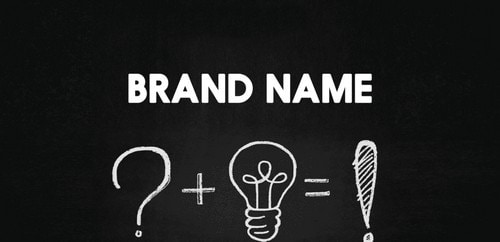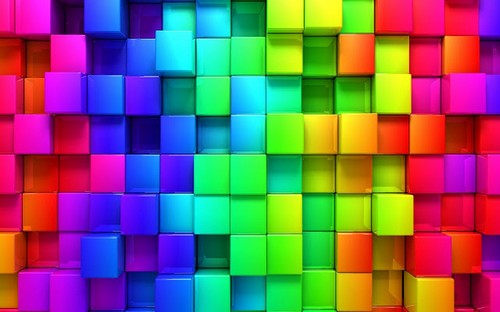The brand is represented by the various tangible elements that create and formulate a visual, auditory, and olfactory brand identity resulting in the innate and inherent Brand Elements.
For instance, the brand logo, tagline, color palette, all the marketing, and promotional materials, letterheads, signage, messaging and communication, and so on are all tangible representations of the brand that make up its sensory identity in the market and in the minds of the customers.
As a full-service marketing agency with the best of experience and knowledge helping a variety of clientele builds a discernible brand.
We often hear the word logo mentioned when the brand question arises and that’s because the logo is the standard bearer for the entire brand experience and all the Brand Elements.
Have you ever wondered how brand elements create a memorable impact on consumers?
When designing a comprehensive brand strategy, it’s essential to consider the role of color as a powerful brand element. According to a study by the University of Loyola, Maryland, color can improve brand recognition by up to 80%. This emphasizes why brands like Tiffany & Co. have trademarked their robin egg blue, ensuring they stand out in a competitive market. Engaging the senses through distinctive colors can foster customer loyalty and create a lasting impression.
In addition to traditional elements like logos and colors, the incorporation of sound has emerged as a crucial factor in brand identity. A report from research firm SoundOut indicates that 74% of consumers favor brands that incorporate a unique sonic identity, such as jingles or distinctive audio cues. Companies like Intel with their iconic ‘Intel Inside’ jingle have exemplified how sound can enhance brand recall. As brands evolve, leveraging multisensory elements provides an opportunity to connect emotionally with customers and strengthen brand association.
Yet there are so many more ways to experience a brand than just a logo or a tagline with it.
Table of Contents
Different Types of Brand Elements
1) BRAND NAME
Brand name refers to the word, phrases or words used to identify the company, product, service or concept and other core values of the brand.
On the facade, naming a brand may seem quite easy and simple. But coming up with an iconic and innovative brand name is very difficult. Ponder about the brands such as Chevy, Coca-Cola, Häagen-Dazs, and Target. Today, these words are monikers that are now an understood part of our everyday normal language. And because consumers are willing to pay more for products marked with these legendary brand names, those simple words are worth millions now.
2) LOGO
To simply explain, a logo is a visual trademark that identifies the brand with its design elements.
The Nike swoosh has become so well known that the word “Nike” no longer need to appear with it for recognition as a brand name. The Morton Salt girl has been recognized since the year 1914 even though she has been restyled almost six times. When you see a computer with lit up apple on the back of its screen, you know the brand without even a brand name written with it.
As mentioned earlier, a logo is the standard bearer for the entire brand experience and a Brand Element that lives everywhere.
3) THEME LINE
A catchphrase or a tagline, such as Bounty’s “The Quicker Picker Upper” or Verizon’s “Can you hear me now?” are quite very famous.
Essentially, theme lines such as “Just do it.” for Nike or “Don’t leave home without it.” for American Express help to quickly state the brand position memorably in the minds of the customers. Great theme or taglines have a long run rather than being changed every year.
4) SHAPE
Physical shape is like the distinctive shape of the Coca-Cola bottle or the Volkswagen Beetle that is both trademarked elements of those specific brands and can also be used as a brand identity element.
Dyson’s vacuum cleaners feature a unique ball on which they can maneuver quite easily. The one-of-a-kind chunky Ugg boot has become a classic fashion item in the market. And Airstream’s silver bullet trailers stand out quite aptly from their competitors’ products in the market because of their rounded edges.
5) GRAPHICS
Graphics are those Brand Elements that can also bring a brand to our attention in a fraction of a second. The dynamic ribbon is a trademarked part of Coca-Cola’s brand and Coach’s unique pattern of “C’s” emboldens the look of most of their products in the market. Louis Vuitton’s stylized flower pattern makes their luggage uniquely identifiable amongst other products in the market. The red and tan plaid lining makes Burberry coats stand out from plainer competition and are the favorite amongst the fashion lovers.
While they aren’t logos, graphics are the visual elements that serve to quickly identify a brand without any need for words.
6) COLOR
Owens-Corning is the only brand of fiberglass insulation that can be pink in color. UPS’s unique brown trucks and uniforms have become its trademarks and are quite easily identified. Sephora cashiers wear one black glove with which they handle products before giving them to customers making it the brand’s crucial Brand Element.
When used to its full potential, consumers instantly recognize a brand by color quite specifically. It’s the reason Tiffany & Co. trademarked their robin egg blue in the year of 1998.
7) SOUND
Sound or a unique set of notes or tones can also assist in forming a brand’s identity as the crucial Brand Elements.
When a brand is mentioned, a jingle may come to the mind of the customers. For instance, any sports fan would be able to recognize ESPN’s Sports Center introduction from the first two notes of the jingle. A few other famous examples include “Um um good” for the Campbells brand or the Intel Inside music tone.
8) MOVEMENT
Another Brand Element is the movement or how the product shifts, expands or condenses in its nature and functionality.
Lamborghini, the automobile brand has trademarked the upward motion of its car doors. Apple launched quite a revolution of screen interactions namely, the motion of two fingers moving apart, which allows its users to enlarge images on their iPhones and iPods very easily. The revolving motion within its suction chamber sets the brand Dyson’s bagless vacuums apart from the other bagged vacuum brands.
While movement can feel like one of the more abstract brand elements, it shouldn’t be overlooked at all.
9) SMELL
The smell of a brand also adds to the overall elements of the brand identity. For instance, scents, such as the rose-jasmine-musk of Chanel No. 5 is trademarked or the fresh handmade aroma of Lush Cosmetics.
10) TASTE
Last but not least, taste is another one of the crucial Brand Element that you can use to differentiate yourself in the market from the competition.
KFC has trademarked its special recipe of 11 herbs and spices for fried chicken since its inception. McDonald’s is quite famous for their French fries. Soda fanatics swear they can tell the difference between a Coke and a Pepsi quite easily.
Here is a video by Marketing91 on Brand Elements.
In THE END, BRAND IDENTITY IS ABOUT MORE THAN A SINGLE BRAND ELEMENT.
As the above list shows, brands can be represented in many ways that go beyond just a name, tagline or a logo. Whether it is through the smell or movement, strive to involve all the senses to create a richer and more memorable brand experience for all your customers. It is the only way to build a truly disruptive and distinctive brand identity.
Liked this post? Check out the complete series on Branding




You didn’t write this… Marcia Stone did.
you copied this from Marcia Stone
this is called Re-Branding